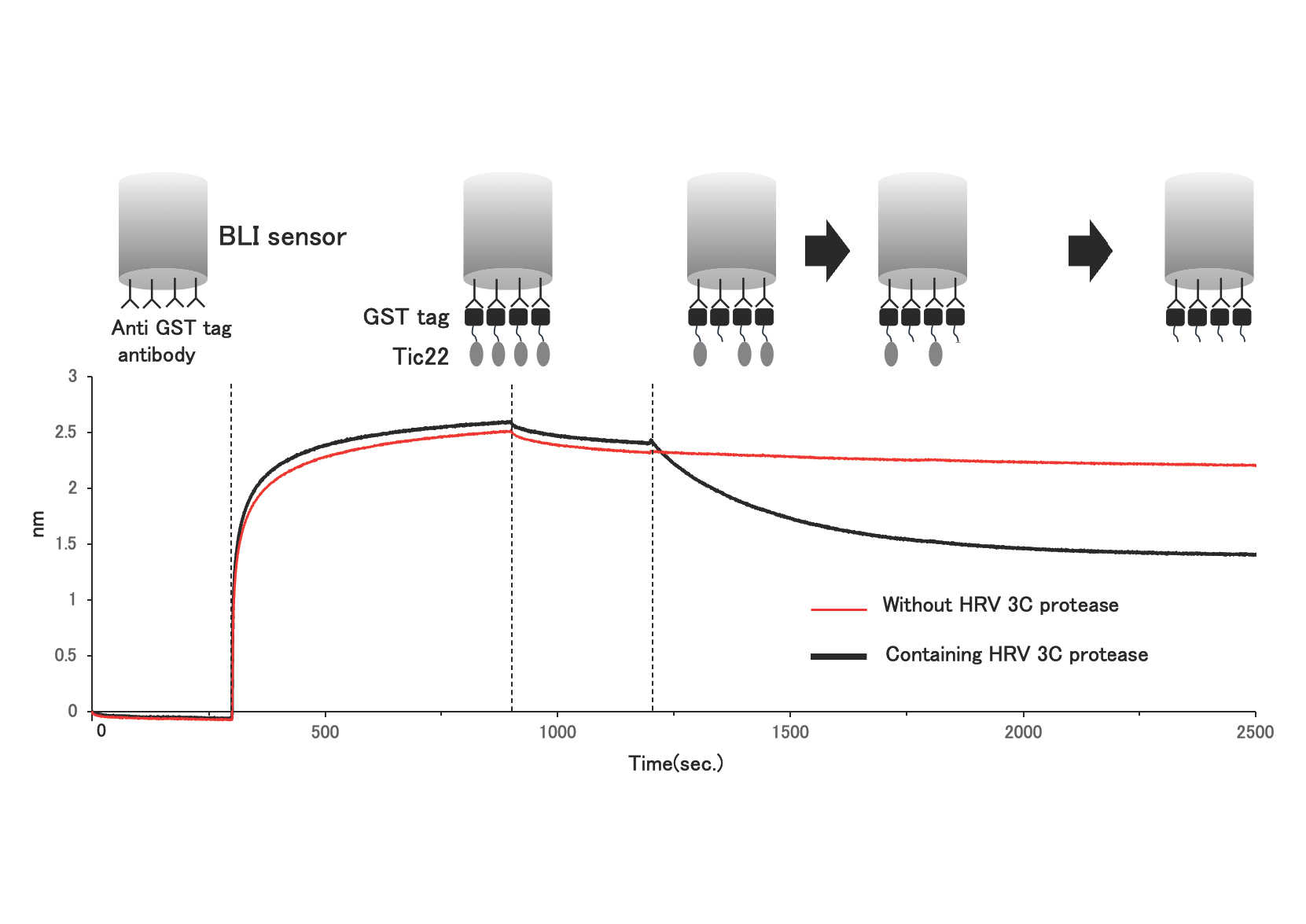男女共同参画学協会連絡会
支援企業による広告記事
- ソーラボジャパン株式会社
- CAD を使って光学装置を設計してみよう
- 「生物物理」2025年10月号
- ソーラボジャパン株式会社
- 次世代2光子顕微鏡―小型化がもたらす新たな可能性
- 「生物物理」2024年10月号
- ソーラボジャパン株式会社
- サイエンティフィックカメラと周辺機器の同期
- 「生物物理」2023年10月号
- ソーラボジャパン株式会社
- 顕微鏡のリノベーション ~ 顕微鏡ポートを活用した光学系の導入
- 「生物物理」2022年12月号
「Biophysics and Physicobiology」に Sena Tarumoto, Sei Inoue, Rina Yanagimoto, Takashi Saitoh による "Monitoring of enzymatic cleavage reaction of GST-fusion protein on biolayer interferometry sensor" をJ-STAGEの早期公開版として掲載
2024年09月18日 学会誌
日本生物物理学会欧文誌[Biophysics and Physicobiology]に以下の論文が早期公開されました。
Sena Tarumoto, Sei Inoue, Rina Yanagimoto, Takashi Saitoh
"Monitoring of enzymatic cleavage reaction of GST-fusion protein on biolayer interferometry sensor"
URL:https://doi.org/10.2142/biophysico.bppb-v21.0019
- Abstract
- Biolayer interferometry (BLI) is an optical sensor-based analytical method primarily used for analyzing interactions between biomolecules. In this study, we explored the application of BLI to observe the cleavage reaction of glutathione S-transferase (GST)-tagged fusion protein by human rhinovirus (HRV) 3C protease on a BLI sensor as a new application of the BLI method. The soluble domain of the Tic22 protein from Plasmodium falciparum was expressed and purified as a GST-tagged fusion protein, GST-Tic22, in Escherichia coli. A cleavage sequence for HRV 3C protease was inserted between the GST tag and the soluble domain of Tic22. First, we confirmed that GST-Tic22 was specifically cleaved at the inserted sequence by HRV 3C protease using sodium dodecyl sulfate-polyacrylamide gel electrophoresis. Following this, GST-Tic22 was immobilized on a BLI sensor, and enzymatic cleavage by the HRV 3C protease was monitored. We observed that the soluble domain of Tic22 was cleaved and released into the buffer over time, and this reaction was dependent on the enzyme concentration. This result demonstrates that the BLI method can be used to evaluate the cleavage of the GST tag by the HRV 3C protease in real time under different conditions. This method enables a more efficient search for the optimal conditions for the tag cleavage reaction in fusion proteins, a process that has historically required a substantial amount of time and effort.
URL: https://doi.org/10.2142/biophysico.bppb-v21.0019







